| Zeitschrift Umělec 2003/1 >> The Last East European Show… | Übersicht aller Ausgaben | ||||||||||||
|
|||||||||||||
The Last East European Show…Zeitschrift Umělec 2003/101.01.2003 Jelena Vesič | balkans | en cs |
|||||||||||||
|
"“If it is last then it must be precious.”
The Last East European Show took place in the Museum of Contemporary Art in Belgrade between 17 May and 18 June. This was an exhibition that can be understood within the framework of exhibiting. It arose as the final result of an annual working process, involving the participation of 21 curators and 59 artists. The starting point for this event was the seminar “Curating in Transition.” According to the program coordinators Zoran Erić and Stevan Vuković, art historians and theorists from Belgrade, “the main focus was on the role of curator-as-mediator, processing the permeability of the art system for innovative artistic practices, providing them with the adequate contextual framework, cultural and theoretical reading.” So: A Croatian popular culture magazine has recently claimed that suicide in front of a web camera has become the ultimate in bizarre fun. Voyeurs encourage the candidate, send him messages of the warmest support, collaborating in this extreme act, turning the victim into the star of the moment — death, as the most significant moment in somebody’s life, is becoming spectacle… Unofficial advertising for The Last East European Show was developed on a similar principle. The city was abuzz: come on Saturday, get there right on time, a Russian woman is going to hang herself! Is this not symbolic, keeping in mind that the title itself claims that East Europe is becoming yesterday’s news, as well as the “great” ideology, and is heading for oblivion accompanied by all the big narratives and emancipation projects of the last century? Spectacle, on the other hand, is always dazzling, and spectators thronged in front of the dressed-up star of the day — artist Elena Kovilyna, rope around her neck — awaiting the sudden kick of the stool out from under her feet, causing her body to wave at the horizon… Nothing happened. And not just because of the calm audience in the museum, or the tense shield of paramedics from a well-known private clinic who were preparing themselves to make the life-saving leap. A documentary video from the opening performance shows the body of the artist, not very political and so powerfully personal; under myriad gazes she even blushed and buttoned up her décolletage a little… This kind of viewing experience, combined with a determined giving over to carefree post-political lethargy, accompanied the works of most artists. But there is always “the other side.” And on that side the work Agalma by Zoran Todorovic should be highlighted, framed, for overcoming the traumatic past of nationalist clashes in the territory of former Yugoslavia. It deals with the fatal wedlock between artists and curators, reproduced in a relative proportion of power within the contemporary art system. Of equal interest was the accompanying comment by the curators, signed under the title Kontejner: “To become closer to us, Zoran used a hot medium. He sent us a part of himself, surgicaly removed, transformed into the finest human soap. A bath taken with the slogan ZORAN LATHERS WELL cleansed the woman in the man, the curators in the artist, the Croatian woman in the Serbian man. In this way, his body becomes telepresent, or, more precisely, it functioned as a body of love in two places simultaneously. And Lacan said that to love means to give what one does not have.” Topics concerning the “center - margin” came up most often in this exhibition and were observed from positions similar to Henry Meyric Hughes’s comments from the intro to the catalogue: “How far The Last East European Show will be received as a marginal construction and how far its ’marginal’ concerns will appear to have moved closer to center stage for an international audience will be affected by similar issues of individual and collective identity, history and memory and by what might be described as the re-socialization of society.” A work most directly related to this view, or to the explication of the process of resocialisation, is a video by Margarita Zinets and Alexander Vereschak. The projected scene recalls the well-known atmosphere of riding the elevator: a group of people stands with their back turned to the observer, the familiar tight silence causes minimal anxious gesticulation. The eternal duration of this process (literally, in this case) produces a growing uneasiness through its absence of events, signaling the alienation in post-socialistic societies conditioned by the exchange of the paradigms “individual” and “collective.” Other works take on similar issues. Block 16 by Vahram Aghasyin brings information about city suburbs under construction and built during the Soviet era, but never actually finished, stating, once again, the unfinished state of the moderna project and socialistic modernization. Dušan Zahoranský allows the observer to change TV channels, but the certainity he encounters each time is the same two-minute sequence from a well-known American soap opera in various Eastern European languages. On the last channel the actors begin to meow, mimicking the softness of a kind of universal pan-Slavic language. Avantgarde art as a place of re-cognition and unavoidable reference to all East European exhibitions maintained its presence, on this occassion, only in the isolated resonancy of the title itself, and in the initial intentions of the program coordinators. Nobody posed the question of the Last Futuristic Show, which, through a fist fight between Tatlin and Malevich, made the possibility of reconcilliation between the studio and the factory, between the artist and the social actor even more distant. The only consensus reached in The Last East European Show is the attribute “the last.” Cristian Alexa, who smuggled himself in as a member of the security crew for the Museum and acted like one of them under slogan “if it’s the last one then it must be precious, what else to do but to guard it” broke through the common frames of the relationships between artists and high museum institutions, forced his way deep into the specific exhibition conception. But there is no use in lamenting the absence of a “deeper” meaning when the modern theory on contemporary art teaches that we have reached the end of “authoritiveness” and the obligation to transcend daily experience has also expired. Nicholas Bourriaud claims that the works worth considering today function as a “space in-between” and produce the experience of communication generated by the mutual existence of the observer and the work itself. Garden, project by Vector Group and I sign everything that is blue by Anto Jerković perfectly comply with the method of “relational aesthetics.” Mowing a part of the Museum’s yard and mapping significant places (the skyscraper of the former Central Commitee of the Communist Party and the Eternal Flame initiated by Mira Marković) resulted in the “unplanned” finishing of the work by the staff of the Museum, who in the end mowed the entire yard. The work dissappeared, but communication was made ... If The First East European Show (After The Wall) showed the official highlights of art production by the Soros network centers and produced a brand of “East European Art,” then The Last East European Show tore off that label, exchanging it with a recognizable low-fi production tag. The conceptions of emerging curators bring in art “from the field,” not otherwise possible to be seen in big art gatherings, especially not in the museums. The fundamental quality of The Last East European Show is the “stepping out of the supermarket” and penetrating deep inside the art system. It is not just about the simple favoritism of exotic flavors, and fantasies about innocent spaces still “resisting” the recognizable shapes of institutionalism — it’s about far more responsible methodology, requesting a tight bond between the curator and the artist within the field of art production itself. The fact that a large number of works were made exclusively for this exhibition, or were given significant promotion and interpretative context through it, speaks in favor of creating the exhibition as a unique event, not being “exhaustible” in the vast reproduction of presenting, but moving the mechanisms that consequently shape the scene. It could be said that Residency in Trabant — a work by the artistic group Sasvim sam (Vladimir Nikolić, Vera Večanski, Žolt Ko-vač) — traveled such a path. Functioning as a “system within the system” it became the trademark of the show. A two-year tradition in this program has resulted in a significant rise in popularity. Last year the initiators themselves first spent 24 hours in the Trabant, talking about art and making art. Knowing the specific circumstances, it could be a reaction to the pressure of proposals, and, finally the disqualification from important art competitions offering residency in San Francisco and New York. This year they are reproducing a “false resemblance” for the board of selection, establishing and sticking firmly to its propositions (a competition for “Residency in the Trabant” only artists from the EU can apply), going through the painful process of the detailed administration of candidates (about 50 of them). Winners spent 48 hours in the Trabant, and because the conditions of production wouldn’t allow for bigger artistic production, they decided to crown their stay with a modest performance. At the opening they suddenly started the engine of the old vehicle in the lobby of the Museum and moved it forward a few meters. The security force got a little riled up for a moment, but it soon became clear that this disturbance wouldn’t result in any safety violations. "
01.01.2003
Empfohlene Artikel
|
|||||||||||||
|
04.02.2020 10:17
Letošní 50. ročník Art Basel přilákal celkem 93 000 návštěvníků a sběratelů z 80 zemí světa. 290 prémiových galerií představilo umělecká díla od počátku 20. století až po současnost. Hlavní sektor přehlídky, tradičně v prvním patře výstavního prostoru, představil 232 předních galerií z celého světa nabízející umění nejvyšší kvality. Veletrh ukázal vzestupný trend prodeje prostřednictvím galerií jak soukromým sbírkám, tak i institucím. Kromě hlavního veletrhu stály za návštěvu i ty přidružené: Volta, Liste a Photo Basel, k tomu doprovodné programy a výstavy v místních institucích, které kvalitou daleko přesahují hranice města tj. Kunsthalle Basel, Kunstmuseum, Tinguely muzeum nebo Fondation Beyeler.
|







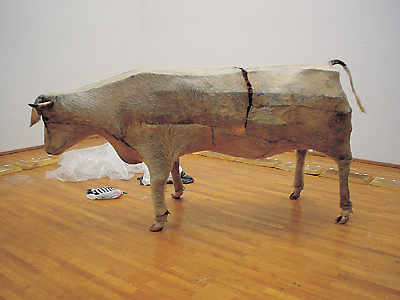



















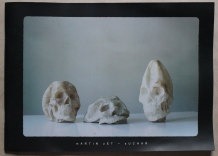




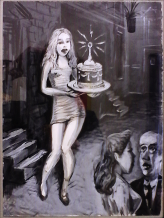
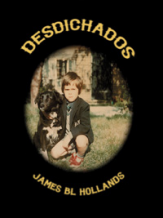
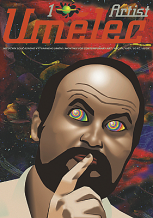
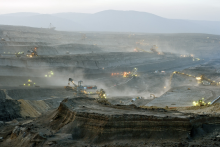


 Potsdamer Str. 161 | Neu Divus in Zwitschermaschine, galerie und buchhandlug in Berlin! | Mit U2 nach Bülowstraße
Potsdamer Str. 161 | Neu Divus in Zwitschermaschine, galerie und buchhandlug in Berlin! | Mit U2 nach Bülowstraße
Kommentar
Der Artikel ist bisher nicht kommentiert wordenNeuen Kommentar einfügen